Ahh, the Olympics. The finest demonstration of physical excellence known to man. From the relentless stamina of the cross country skiers to the technical perfection of the figure skaters, watching each event puts you in awe of the finely honed athleticism of the world’s most talents athletes. And then there’s curling. I’m not saying curling isn’t a sport or isn’t worthy of being in the Olympics, it just lacks the perceived physical requirements of some all of the other events. So what exactly is curling? How can you understand it and, more importantly, how can you sound like you know what you’re talking about when it’s on? I was lucky enough to attend a match here in Sochi this week and here is what I learned:
What is Curling?
Unless you’re Canadian or Scottish, you may not have any idea what’s happening when watching curling. But it’s actually pretty easy to understand. If you’ve ever played lawn bowling, bocce ball or even shuffleboard, it’s basically the same game but on ice. Two teams face off against each other sliding their stones across the ice towards a large bulls-eye. The two teams take turns sliding eight stones each and this makes up one round. Depending on the level of play, there can be as many as 10 rounds in a match.
Why is it Called Curling?
Although it may look smooth on TV, the surface of the ice actually has a rough “pebbled” texture to it. This makes the stones “curl” as they attempt to travel in a straight path towards the bulls-eye. The manic sweeping attempts to control the stone’s direction and speed by smoothing a path that’s easier for the stone to travel. The people with the brooms are following directions from their teammate at the bulls-eye on which direction to try to coax the stone. The further they want it to go the more sweeping is necessary to smooth out the ice. If they are happy with the stone’s course and speed they may not have to sweep at all.
How Do You Score?
After all 16 stones are thrown, the team with a stone closest to the center of the bulls-eye wins. They get one point for the closest stone, and one additional point for each stone that’s somewhere on the bulls-eye and closer to the center than the other team’s closest stone. This could mean that in a single round, a team can score up to eight points and as few as one since someone has to be closest and score at least a single point.
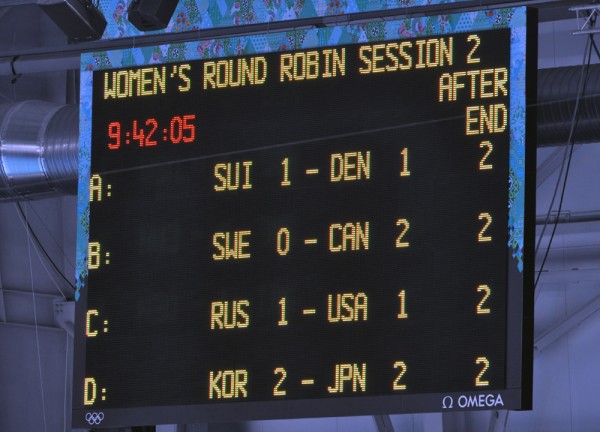
Just to make things more confusing, in Olympic curling there can be four matches taking place simultaneously!
Wouldn’t the Team That Goes Last Always Win?
Yeah, kinda. A round of curling goes back and forth as each team throws their stones. But no matter how close you got that second stone to the center of the bulls-eye on your second throw it really doesn’t matter if that stone has been knocked out on subsequent turns. This gives the team that throws last a tremendous advantage, which is a bit silly but I guess unavoidable. This also brings a ton of strategy into the game though as it becomes not just throwing each stone to get closest to the center, but also setting up a situation where you’ll be the closest stone at the end. This can involve setting blocking stones or knocking out other stones in a way that will favor you in the long run. It’s actually pretty strategic.
Now that I Understand Curling, How Do I Sound Obnoxious When Watching it?
Here’s some curling vocabulary to mix into your comments:
- Sheet – the surface of ice being played on, it’s about 150 feet long
- Pebble – the tiny frozen water droplets making the ice not-smooth
- House – the giant bulls-eye at either end of the sheet
- Button – the very center of the bulls-eye
- End – a round of curling, many of which will make up the match like a baseball inning
- Sweeper – the people sweeping the ice with a broom
- Skip – the player standing in the bulls-eye screaming what to do at the other players
- Hammer – the final stone thrown of the round
- Guard Shot/Stone – stones/shots strategically placed to block the other team’s stones
- Takeout Shot – a shot aimed at knocking the other team’s stone out of the bulls-eye
- Draw Shot – a shot that avoids the other stones and tries to land right in the bulls-eye
- Extra-Ends – overtime in case of a tie

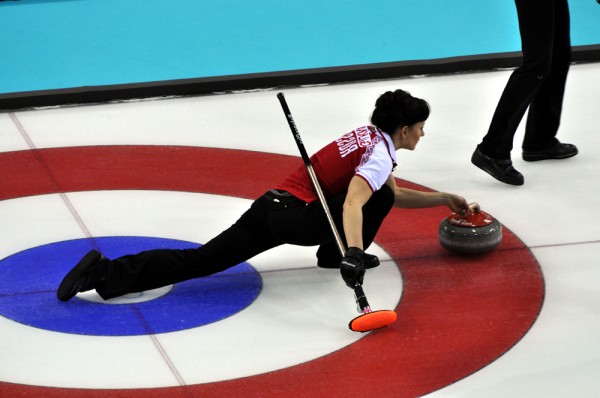
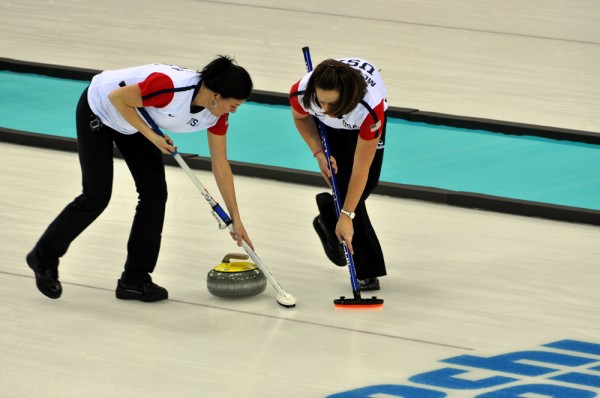
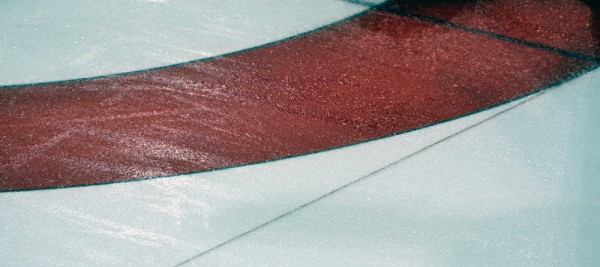
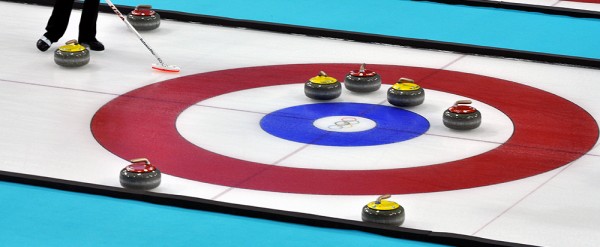










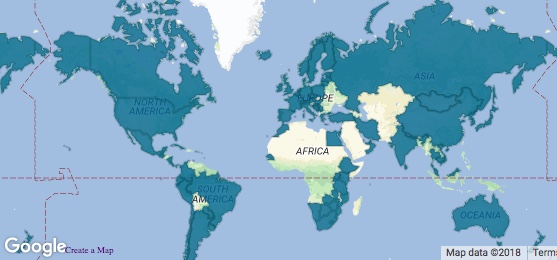



Ok, ok, ok. Canadian here. Lets get some things straight. Even though it might seem that you don’t need much athleticism to play curling you really do. It’s so freaking hard to throw those rocks and squat and slide and keep your balance like they do. I did it once and I was in soooooo much pain the next day.
Also the stone curls because when the thrower releases the rock they turn the handle either to the right or the left depending on where they want it to go and the speed helps with the turn. Also yes the sweepers clean the ice and heat it up with sweeping so the stone travels easier. This allows them to control some of the speed but the person who threw it really has the most influence on the speed.
Another thing is that an end can happen with a 0 score. Not every end ends with at least one point.
Lastly it’s so rare that any team would ever score 8 in one end and every time you loose an end you are given the hammer so you have an advantage that evens out. I think that’s it 🙂
Haha – thanks for the follow up’s Cailin! i was trying to simplify a bit but you’ve made some solid contributions here 🙂 And I do not doubt the athleticism necessary. It seems evident by looking at what any serious curler looks like!